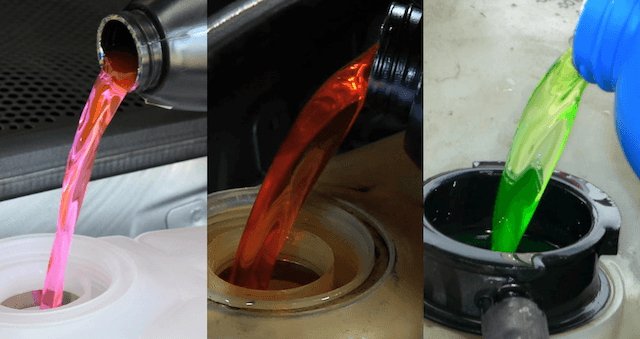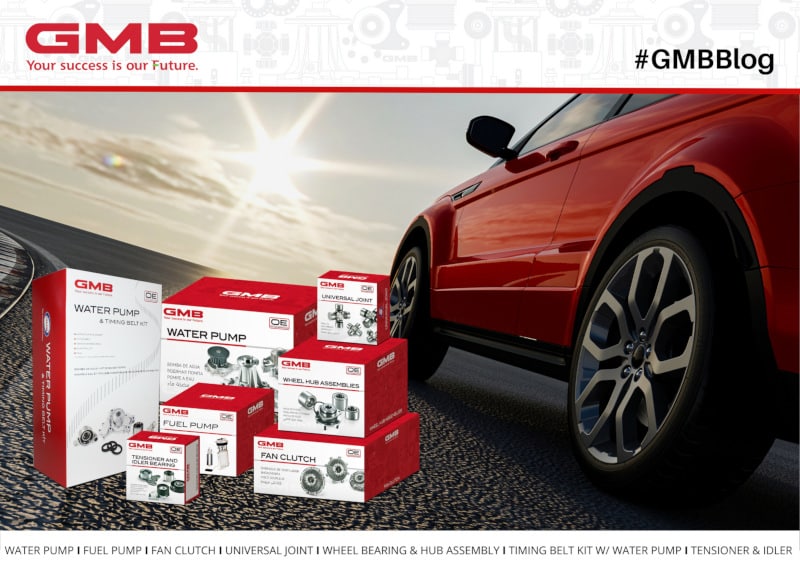What Is Engine Coolant Made Of?
Coolant is a sweet-smelling special blend of liquid that runs through the engine. It absorbs the scorching heat from the engine to keep it at a manageable temperature. Next, it dissipates the heat through the radiator. It also doesn’t freeze at subzero temperatures, allowing the coolant to circulate even on the coldest days.
But what is coolant made of? Every coolant brand has its own proprietary blend of liquids and chemicals. Yet, they all use the same main ingredients. Let’s discuss the three main ingredients in coolant.
The Three Main Ingredients In Coolant

Coolant contains three main ingredients:
- Water
- Antifreeze
- Dye
Let’s talk about each ingredient in more detail.
1. Water
Here’s a fun fact: in the 1930s, some car owners cooled their engines only with water. It’s no wonder, because water is the best way to cool the engine. You might be wondering, “If water is the best way to cool the engine, then why does coolant even exist?
Just because water is the best way to cool the engine doesn’t mean that it’s good for the engine. Water is quite corrosive, which is bad news for the components within the engine. People back in the 1930s tried to reduce the issue by using distilled water. But it was still not good enough because it still caused rust. Another big issue with water is the fact that it freezes in cold weather. We all know that ice can’t move through the engine. Finally, water would overheat in hot temperatures and create steam pressure within the motor.
So people set out to find a foolproof solution that:
- Wouldn’t rust out the components within the engine
- Wouldn’t freeze in freezing temperatures
- Wouldn’t overheat and create steam pressure within the motor
- Could cool the engine in any condition
Eventually, they found a way to bring water to the next level, and they didn’t expect it to be so simple. The solution? Just add antifreeze.
2. Antifreeze
Antifreeze is another name for ethylene glycol. Coolant contains antifreeze because it lowers the coolant’s freezing point and increases its boiling point. In other words, antifreeze makes it possible for the coolant to not freeze at freezing temperatures, and not dissipate into steam at hot temperatures.
Antifreeze ingredients are as follows:
- More than 90% ethylene glycol (in most cases, depending on the manufacturer)
- The manufacturer’s own blend of chemicals that protect engine components (like the water pump) from rust and corrosion:
- Phosphates (which protects iron from rust)
- Silicates (which protects aluminum from rust)
- A solvent that emulsifies the liquids
3. Dye

Have you noticed that coolant comes in many different colors? There’s a reason for that. Coolant always starts off colorless, but then the manufacturer adds dye to it. Each color represents a certain type of coolant. Some of the most common coolant colors include:
- Green
- Blue
- Purple
- Pink
- Yellow
- Orange
- Red
It’s important to note here that you should never mix different coolants together. This post does a good job explaining why.
If you have any questions about any of the ingredients in coolant, you know where to find us.
MORE CONTENT
Stay current!
Sign up here to get the latest news
and updates on all things GMB.
Sign Up To Receive GMB News & Updates!

